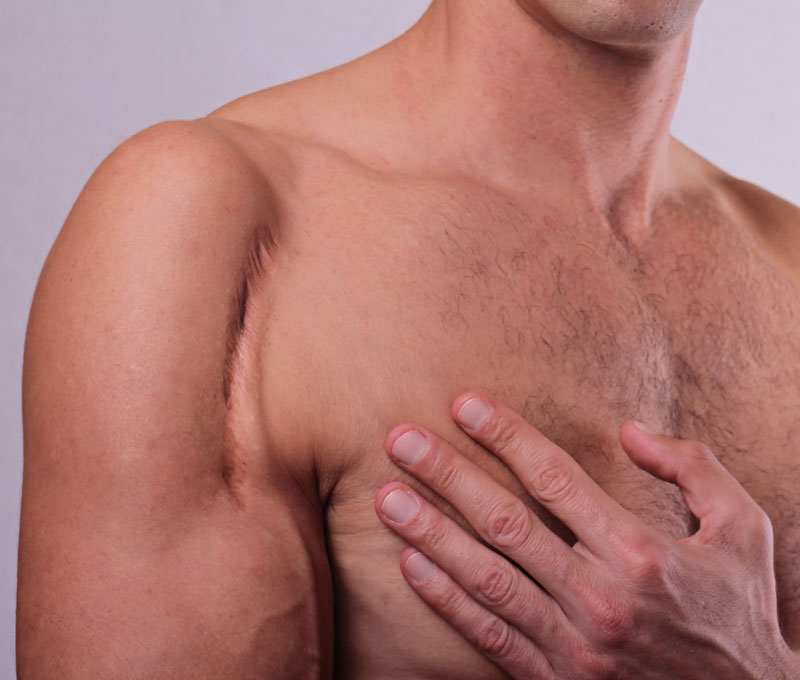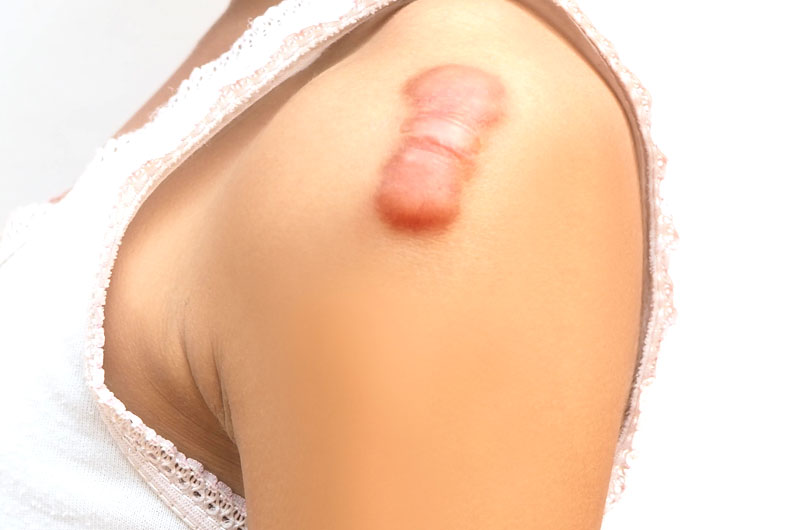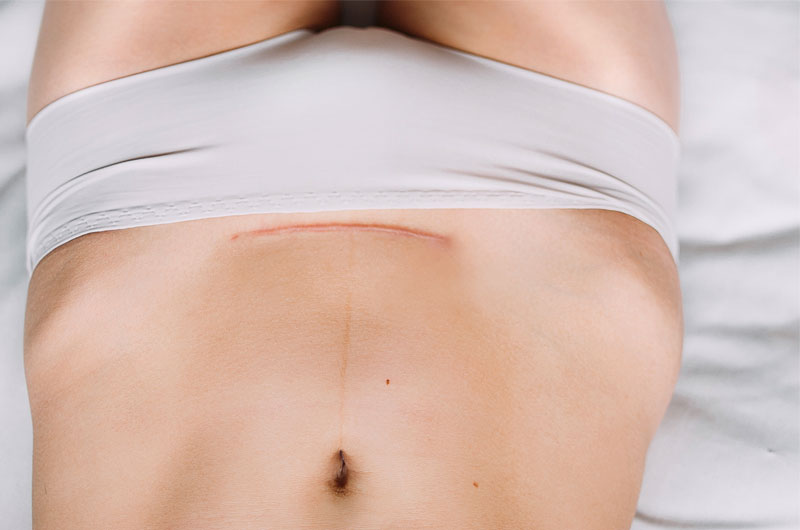
Pathological Scars result of an abnormal development of the healing process of injured skin. The scars are a frequent complication of burn injuries, but can also form after piercings, cuts, or even acne. These are often thickened, wide, raised scars that may not be dangerous or threaten life but can be uncomfortable in many ways. They tend to be itchy and sore when they are rubbed by clothing or any other material, also they may have a negative effect on the way that people who suffer them perceive themselves; this can give way to depression or other psychological illnesses
Sometimes when our skin suffers an injury body cells called myofibroblasts produce too much collagen during the healing process. Overproduction of collagen can result of the following reasons:
There are two types of pathological scars that are similar but may require different treatment due to their specific characteristics: keloid and hypertrophic scars.
These are the main differences between keloid and hypertrophic scars:


If you need further information, you can contact us or schedule an appointment. We’ll be glad to assist you.